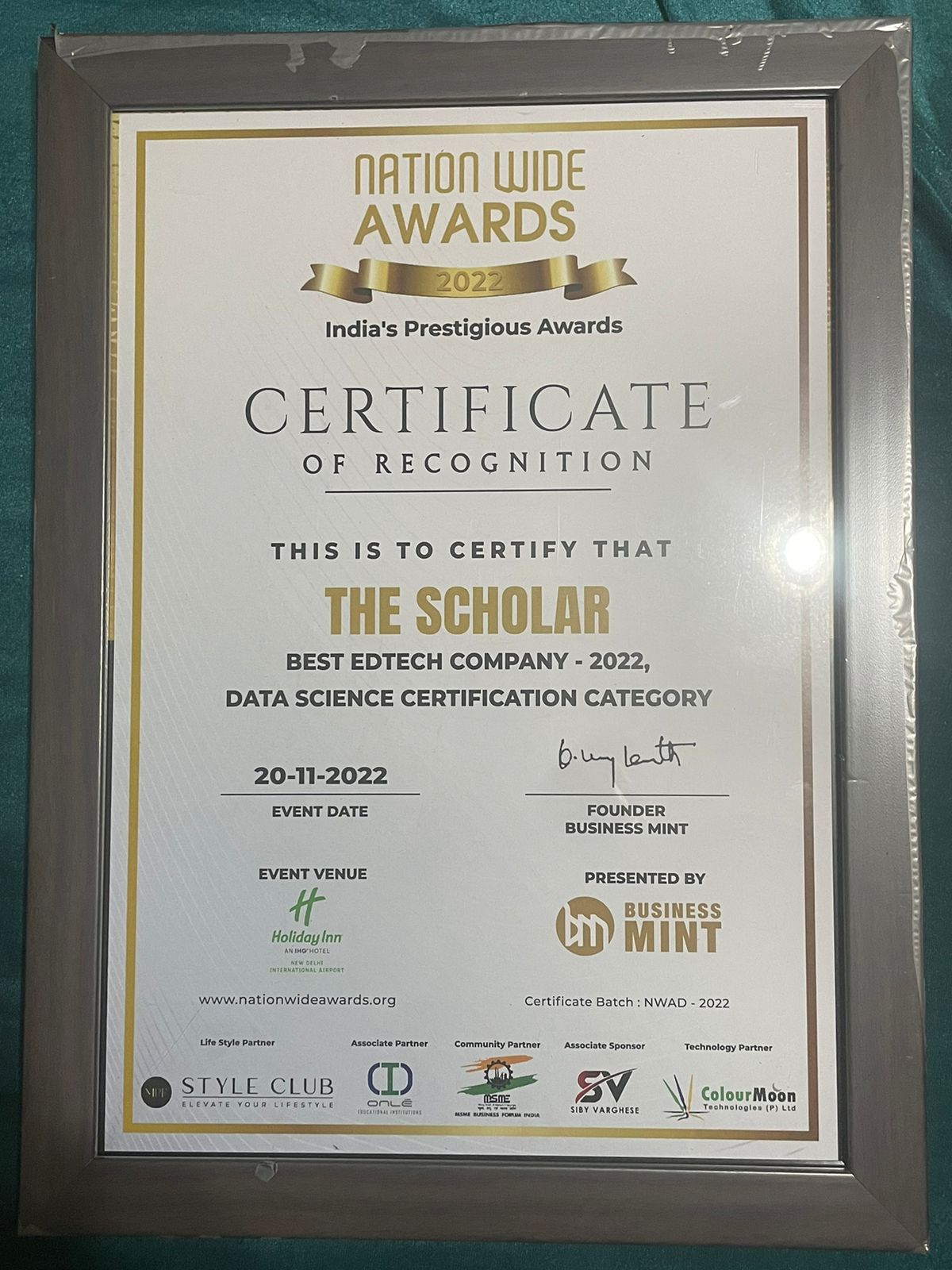In our data-driven and technological age, businesses are looking to utilize these technological advancements in the day to day work and looking for individuals with a robust understanding of data science as they are more valuable than ever.
Masters Program in Data Science from The Scholar is designed for students with all levels of experience and for Freshers, equipping learners for a wide variety of interesting and in-demand careers. Gain specific, marketable skills in the top coding languages, along with critical knowledge in Data Science standard programming using Python, mathematics, statistics, data analysis, and machine learning.
This program is designed by Industry professionals and give learners end to end understanding of the real world scenarios which will help the learners to gain the best knowledge aad they can apply in the job while working.
The Complete Program will Have 150+ Hrs of Live Training + 150+ Hrs of Working on Assignments & Case Study .
| Designed for Fresher’s & Working Professional | Dedicated Customer Support | ||
|
150 Hours of In Depth Live Online Learning |
Career Support | ||
| Covering Most Demanding Tools | LinkedIn Profiling By Industry Expert | ||
| 25+ Case Studies & Capstone Projects | Building Project Portfolio | ||
| One to One with Industry Mentors | AI based Resume Building | ||
| 24/7 LMS Acces | Mock Interviews Industry Tech Experts |
| Eligibilty | Selection Process | ||
| Any Graduate with Min 60% and Above marks | Aptitude Test | ||
| No Experience is Mandatory | Personal Interview with Academic Expert | ||
| No Programming Background Required | Admission Letter & Enrollment | ||
| Tenure | Deadline | Amount ( In INR ) |
| 1st | On Selection | 30000 +GST |
| 2nd | 1st May 2025 | 27000 +GST |
| 3rd | 1st June 2025 | 27000 +GST |
| 4th | 1st July 2025 | 27000 +GST |
| 5th | 1st Aug 2025 | 27000 +GST |
| 6th | 1st Sep 2025 | 27000 +GST |
| 7th | After Successful Placement | 50000 +GST |
Note : 7% Discount On Lumpsum Payment .
No Cost Emi also available of 18 / 24 Months (Subject to Approval of Docs By Financial Partner )









